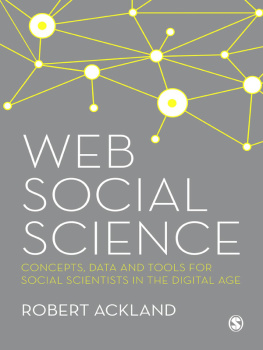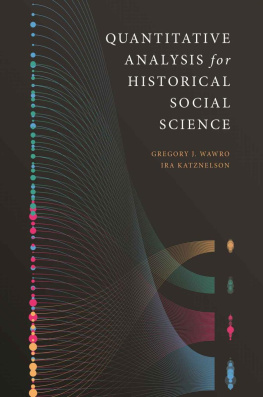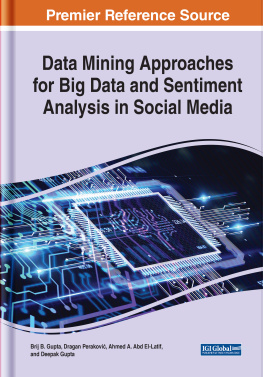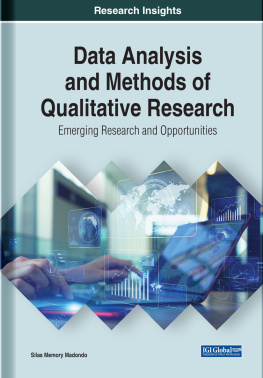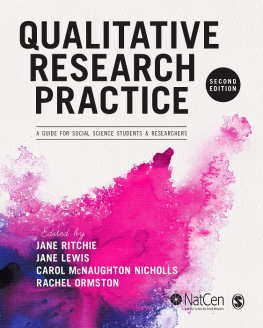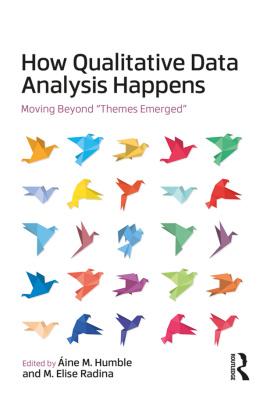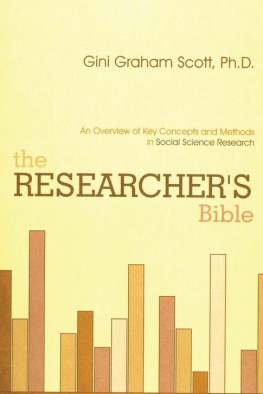First published 2005 by Paradigm Publishers
Published 2016 by Routledge
2 Park Square, Milton Park, Abingdon, Oxon OX14 4RN
711 Third Avenue, New York, NY 10017, USA
Routledge is an imprint of the Taylor & Francis Group, an informa business
Copyright 2005, Taylor & Francis.
All rights reserved. No part of this book may be reprinted or reproduced or utilised in any form or by any electronic, mechanical, or other means, now known or hereafter invented, including photocopying and recording, or in any information storage or retrieval system, without permission in writing from the publishers.
Notice:
Product or corporate names may be trademarks or registered trademarks, and are used only for identification and explanation without intent to infringe.
Library of Congress Cataloging-in-Publication Data
Michelson, William M., 1940
Time use : expanding explanation in the social sciences / William Michelson.
p. cm.
Includes bibliographical references and index.
ISBN 1-59451-173-X
1. Time management surveys. 2. Time managementResearchMethodology. 3. Social sciencesResearch. I. Title.
HN49.T5M53 2005
640.43072dc22
2005015674
ISBN 13 : 978-1-59451-173-8 (hbk)
ISBN 13 : 978-1-59451-174-5 (pbk)
This book is about the study of peoples use of time. What is this approach? What forms does it take? What might we learn from it? How might we best achieve its potential?
My journey with time-use began in the late 1960s. I was studying housing. I wanted to know how peoples behavior varied based on this and other major aspects of their home environments. I sought a survey-based measure of everyday behavior. Time-use seemed appropriate. I adapted it to deal with built environments. It proved helpful.
Although this application of time-use research led me into contact with others using the technique, even to fostering the start of a research group, I didnt regard myself as primarily a student of time-use. This was just a handy technique to provide information on peoples behaviorsuperior in many ways to observational and standard survey approaches.
A decade later, another studythis one on how maternal employment impacts women and their families (not least, children)led to my utilization of the technique once again. A second study at the same time, but which focused directly on adolescents, also demanded the beneficial attributes of time-use data.
Other studies have followed: on life in experimental housing projects, on the lives of home-based workers, on those giving care to other adults, and more. In no instance did I imagine that I was setting out to study the dynamics of time per se.
But as this occurred, while also simultaneously learning of (and from) others working with time-use, I sensed increasingly that this approach offers a foundation for expanding explanation in the social sciences. It complements and in some ways supersedes the array of ongoing, accepted perspectives of inquiry. The challenge was to come to grips with its salient features, underlying advantages, and most fruitful strategies. There was surely more to time-use study than accounting for time devoted to activities within populations and subgroups, on the one hand, and to the temporal parameters of such applied situations as housing, employment, and transportation. There must be a whole with value greater than the isolated use of some of its parts.
My research applications turned to ways of assessing what meaning time-uses have for persons studied, as well as possible subjective outcomes incurred. This direction was not unique. Nor was it common.
During the 1990s, I received positive reinforcement for pursuing these concerns in greater depth from Professor Andrew S. Harvey in the form of a symposium he helped organize with Professor Wendy Pentland, leading eventually to a multi-authored anthology on time-use (Pentland et al., 1999). In retrospect, the chapter I wrote then was but a crude and partial microcosm of the current effort. But it influenced the direction of my subsequent efforts to clarify and refine the perspective and details presented here. Although I continued to apply my own research to additional specific substantive questions, my commitment and directions were reinforced by collaboration in two successive research projects organized by Andy Harvey and sponsored by the Social Sciences and Humanities Research Council of Canada. Subsequent to these projects, I have had the benefit of research funds made available with my appointment to the S. D. Clark Chair in Sociology at the University of Toronto.
Over these years of tinkering with time-use analyses and pondering their underlying import, developments in computer hardware and software have made it easier to initiate a greater variety of inquiries and to see more rapidly how they panned out. More comprehensive data sets than those I had collected became common and available for secondary analysis through the good will and generosity of researchers around the world, eager for colleagues to develop their data sets more fully. Clas Rydenstam of the Swedish Central Statistical Office, Andy Harvey (St. Marys University, Halifax), and Jonathan Gershuny (University of Essex) were particularly helpful in my case. The way has also been facilitated greatly by the availability for academic research of Statistics Canadas General Social Surveys, of which three to this point have included time-use assessments of large, representative samples of the Canadian population. The Data Library within the University of Torontos library system, under the direction of Laine Ruus, provided supportive access.
The last ingredient to realize my goal of transcending scattered time-use inquiries and creating an integrated representation of how time-use benefits social science explanation was time itself, which was needed to finalize my perspective and to weave together the illustrative details. This involved not only attention to past work, but to considerable amounts of new analysis from both large, current data sets and some more specialized and detailed data sets I had collected in previous yearswith the wisdom of hindsight and current computation tools. Thanks to the understanding and support of the University of Torontos former Dean of Arts and Science, Carl Amrhein, and the former Chair of the Department of Sociology, Lorne Tepperman, I had the benefit of a combined (and much delayed) study leave and administrative leave to activate this ingredient.
Two research assistants, David Crouse and Tyler Frederick, were particularly helpful in turning especially knotty analytic directives into useful computer printoutsin some cases helpful graphics and in others, data lists with which I could work further. I attribute their work in the text. Where no attribution is given, I conducted the analyses myself. Glenn Stalker made various contributions to this work during the years of his Ph.D. studies at the University of Toronto. Tyler Frederick constructed the index.
My progress in the conception and application of time-use data over this span of time was made possible by grants enabling data gathering and analysis. Major grantors include the Canada Mortgage and Housing Corporation, Canada Council, the Ministry of State for Urban Affairs (Canada), The Hospital for Sick Children Foundation, the Ministry of Health and Welfare (National Welfare Grants Programme), the U.S. Department of Transportation, the Swedish Building Research Board, the Swedish Transport and Communications Research Board, and the Social Sciences and Humanities Research Council of Canada.


